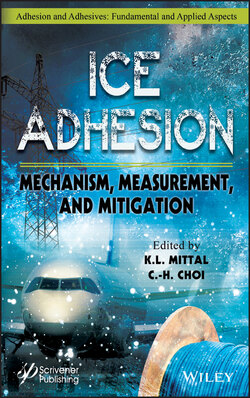Читать книгу Ice Adhesion - Группа авторов - Страница 15
1.2 A Thermodynamically Designed Anti-Icing Surface
ОглавлениеThe Classical Nucleation Theory (CNT) arose from the work of German chemists Volmer and Weber in 1926 in which they estimated the rate of the condensation of over-saturated vapours to liquid, as a function of the degree of over-saturation [68]. Becker and Döring furthered this research in 1935 when they noted that the condensation process has a certain activation energy that must be overcome for the new phase to form [69]. Finally, the homogeneous CNT was completed in 1939 when Frenkel made the important conclusion that the Volmer-Weber/Becker-Döring condensation model also applies to systems which are not over-saturated. Frenkel correctly hypothesized that even under-saturated solutions have a steady-state distribution of small-sized clusters due to continuous nucleation and decay of unstable clusters [70].
It is now known that the Classical Nucleation Theory, even though it is an approximation, gives a reasonable prediction of nucleation rates of any new thermodynamic phase [71]. This includes the nucleation of solid ice from liquid water. In the following sections we outline the derivation of the homogeneous CNT with regards to liquid water homogeneously nucleating into solid ice. Next, we show the extension of the homogeneous case to the more pertinent heterogeneous nucleation scenario of ice forming on a solid surface. In doing so, a method of rational thermodynamic design for anti-icing surfaces is presented.
